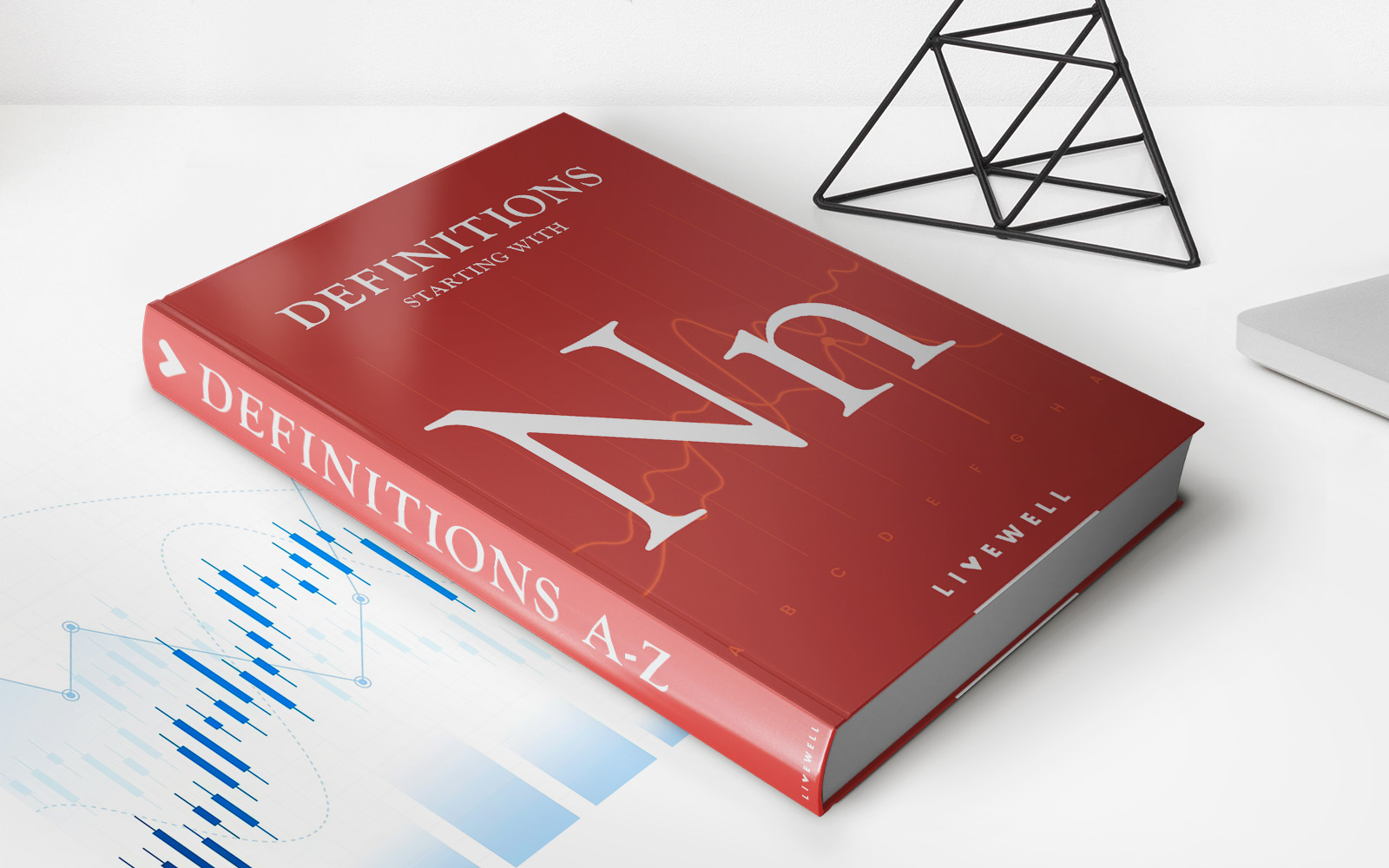

Finance
What Does Rated Driver Mean On Car Insurance
Published: November 22, 2023
Find out what "rated driver" means in the context of car insurance and how it can affect your finances. Explore the implications and considerations for your coverage.
(Many of the links in this article redirect to a specific reviewed product. Your purchase of these products through affiliate links helps to generate commission for LiveWell, at no extra cost. Learn more)
Table of Contents
- Introduction
- Understanding Car Insurance
- Definition of a Rated Driver
- Importance of Rated Drivers
- Factors for Rating Drivers
- How Rated Drivers Affect Insurance Premiums
- Additional Benefits of Rated Drivers
- Exclusions and Limitations for Rated Drivers
- Tips for Maximizing Insurance Benefits with Rated Drivers
- Conclusion
Introduction
Car insurance is a crucial aspect of owning a vehicle. It provides financial protection in case of accidents, damages, or theft. However, understanding the intricacies of car insurance can be daunting. One concept that often confuses policyholders is the idea of a “rated driver.”
A rated driver is a term used by insurance companies to assess the risk associated with insuring a specific individual. Insurance companies analyze various factors to determine the likelihood of an accident occurring and the potential cost of a claim. In essence, a rated driver is an individual whose driving history, age, and other characteristics impact their insurance premium.
Understanding what a rated driver means and its importance is crucial for car insurance policyholders. This article will delve into the definition of a rated driver, the factors that influence the rating process, and how it affects insurance premiums. We will also explore the additional benefits and limitations of having a rated driver on your insurance policy.
By gaining a comprehensive understanding of rated drivers and their impact on car insurance, you can make informed decisions about your coverage and potentially take advantage of discounts or savings.
Understanding Car Insurance
Car insurance is a contractual agreement between a vehicle owner and an insurance company. It provides financial protection in the event of accidents, damages, theft, or other unforeseen circumstances. The policyholder pays regular premiums to the insurer, who, in turn, agrees to cover the costs associated with the specified risks.
Car insurance policies typically consist of several coverage types, including liability coverage, collision coverage, and comprehensive coverage. Liability coverage protects against damages caused by the policyholder to another person’s property or injuries to another person in an accident. Collision coverage pays for damages to the policyholder’s vehicle resulting from a collision, regardless of fault. Comprehensive coverage covers damages to the insured vehicle caused by incidents other than collisions, such as theft or natural disasters.
Car insurance premiums are determined based on various factors, including the driver’s age, driving history, location, type of vehicle, and coverage limits. The insurance company assesses the level of risk associated with insuring a particular driver and calculates the premium accordingly. This assessment is where the concept of a rated driver comes into play.
A rated driver is an individual who is specifically evaluated by the insurance company based on their risk profile. The insurer analyzes various factors, such as the driver’s age, gender, driving experience, claims history, and credit score, to determine the likelihood of them being involved in an accident or filing a claim. This information helps the insurer assess the potential cost of insuring the driver and determines the premium they will charge.
Understanding the complexities of car insurance and the role of a rated driver is essential for policyholders. By comprehending the factors that influence insurance premiums, individuals can make informed decisions about their coverage and take steps to potentially lower their costs. Now that we have established a foundation of understanding car insurance, let’s delve deeper into the definition and importance of a rated driver.
Definition of a Rated Driver
A rated driver, also referred to as an “assigned driver” or a “listed driver,” is an individual who is named on an insurance policy and specifically evaluated by the insurance company for their level of risk. When you purchase a car insurance policy, you are required to provide information about all drivers who will be operating the insured vehicle regularly. Insurance companies analyze this information to determine the appropriate insurance premiums.
The rated driver is typically the main driver of the insured vehicle or anyone who frequently uses the vehicle. This can include the policyholder themselves, as well as other family members, friends, or employees who have regular access to the vehicle. It is essential to accurately disclose all rated drivers to the insurance company to ensure proper coverage and avoid potential claim denials.
The insurance company uses several factors to assess the risk of a rated driver. These factors may include:
- Age and gender: Statistics show that young and male drivers have a higher likelihood of being involved in accidents, so they are often considered higher risk.
- Driving experience: Drivers with more years of driving experience are typically seen as more competent and less likely to be involved in accidents.
- Driving record: A history of accidents, traffic violations, or claims can indicate a higher risk of future accidents.
- Credit history: Some insurance companies consider credit scores as a factor in calculating premiums, as studies suggest a relationship between creditworthiness and the likelihood of filing claims.
Based on these factors, the insurance company assigns a rating to each driver, which reflects the perceived risk they pose. This rating then influences the premium amount for the car insurance policy.
It’s important to note that insurance companies have different approaches to rating drivers. Some may place more emphasis on certain factors, while others may consider additional factors, such as occupation or marital status. It is crucial to review the specific criteria used by your insurance company to understand how they assess rated drivers.
Now that we have a clear understanding of what a rated driver is and the factors that contribute to their evaluation, let’s explore why rated drivers play a significant role in car insurance premiums.
Importance of Rated Drivers
Rated drivers play a crucial role in determining car insurance premiums. Insurance companies assess the risk associated with each driver to accurately price their coverage. Understanding the importance of rated drivers can help policyholders make informed decisions about their insurance policies and potentially save money on premiums.
Here are some key reasons why rated drivers are important:
- Accurate Pricing: Rated drivers allow insurance companies to assess the risk associated with each individual. By evaluating factors such as age, driving history, and credit score, insurers can more accurately price their policies. This ensures that individuals who pose a higher risk of accidents or claims pay a higher premium, while those who are considered low risk enjoy lower rates.
- Risk Management: Insurance companies rely on data and statistical analysis to manage their risk exposure. Rated drivers help insurers assess the likelihood of accidents and claims, allowing them to allocate resources accordingly. This helps maintain the financial stability of the insurance company while ensuring they can honor their obligations to policyholders in the event of claims.
- Premium Discounts: Many insurance companies offer premium discounts or incentives for having rated drivers on the policy. For example, a policyholder may qualify for a discount if they add a more experienced driver to their policy, such as a parent or an older family member. These discounts can help reduce the overall cost of insurance premiums.
- Policy Customization: Rated drivers enable policyholders to customize their insurance coverage based on their specific needs. By adding or removing rated drivers, individuals can tailor their coverage to reflect their driving habits and risk profiles. This flexibility allows policyholders to obtain the right level of coverage at a price that suits their budget.
It’s important to note that insurance companies may have different policies when it comes to adding or removing rated drivers. Some insurers may require all household members of driving age to be listed as rated drivers, while others may allow policyholders to exclude certain individuals who pose a high risk. Understanding your insurer’s policies and guidelines can help you make informed decisions about including or excluding rated drivers on your policy.
Next, we will explore the factors that insurance companies consider when rating drivers and how these factors impact insurance premiums.
Factors for Rating Drivers
Insurance companies evaluate several factors when rating drivers to determine the level of risk they pose and to calculate insurance premiums. These factors provide insights into an individual’s likelihood of being involved in accidents and filing claims. Understanding the factors that insurers consider when rating drivers can help policyholders better comprehend how their premiums are determined.
Here are some of the key factors that insurance companies use to rate drivers:
- Age and Gender: Statistics show that certain age groups have higher accident rates. Young, inexperienced drivers, typically under the age of 25, are considered higher risk. Additionally, research has shown that young male drivers are more likely to be involved in accidents compared to their female counterparts. As a result, insurance premiums for young male drivers tend to be higher.
- Driving Experience: The number of years a driver has been licensed is an important factor. Drivers with more experience are generally considered to be safer and less prone to accidents. New drivers or those with limited driving experience may face higher premiums due to their increased risk profile.
- Driving Record: A driver’s history of accidents, traffic violations, and claims contributes significantly to their rating. Individuals with a clean driving record and no recent claims are typically rewarded with lower premiums, while those with a history of accidents or violations may face higher rates.
- Credit History: Some insurance companies consider credit scores when rating drivers. Studies have shown a correlation between creditworthiness and the likelihood of filing insurance claims. Insurers believe that individuals with good credit are more responsible and pose lower risks, which may result in lower premiums.
- Vehicle Usage: The purpose for which a vehicle is used can impact the rating process. The distance driven per year, whether it’s for personal use or for business purposes, and the area where the vehicle is primarily driven can influence the risk assessment. Drivers who use their vehicles for long commutes or business travel may face higher premiums due to the increased exposure to potential accidents.
- Type of Vehicle: The make, model, and year of the vehicle also play a role in determining the rating for a driver. Some vehicles have higher accident rates or cost more to repair, which can affect premiums. Sports cars and luxury vehicles, for example, are generally associated with higher insurance costs.
It’s important to note that insurance companies may weigh these factors differently in their rating systems. Each insurer has its own underwriting guidelines and algorithms to assess driver risk. Therefore, it’s wise to compare quotes from different insurance providers to find the best fit for your specific needs and risk profile.
Now that we understand the factors that influence the rating process, let’s explore how rated drivers affect insurance premiums in more detail.
How Rated Drivers Affect Insurance Premiums
Rated drivers have a direct impact on the cost of car insurance premiums. Insurance companies assess the risk profiles of drivers to determine the likelihood of accidents and claims, and adjust the premiums accordingly. Understanding how rated drivers affect insurance premiums can help policyholders make informed decisions and potentially save money on their coverage.
Here are some key ways in which rated drivers affect insurance premiums:
- Higher Risk, Higher Premium: Drivers who are considered higher risk due to factors such as age, driving experience, and driving record typically face higher insurance premiums. Young or inexperienced drivers, those with a history of accidents or violations, or individuals driving high-performance or luxury vehicles are often associated with increased risk, resulting in higher premiums.
- Discounts for Low-Risk Drivers: On the other hand, insurance companies often offer premium discounts for low-risk rated drivers. This includes drivers with a clean driving record, older and more experienced drivers, individuals with excellent credit scores, and those who have completed defensive driving courses. These discounts can help reduce the overall cost of insurance premiums.
- Multi-Driver Policies: Insurance premiums for multi-driver policies are influenced by the rated drivers listed on the policy. Adding a high-risk driver, such as a teenager with little driving experience, to a policy with an experienced and low-risk driver may result in higher premiums. Conversely, including a low-risk driver on the policy, such as a parent or an older family member, can potentially reduce the overall premium.
- Excluded Drivers: Some insurance policies allow policyholders to exclude certain high-risk drivers from coverage. This means that the excluded driver will not be covered in the event of an accident while operating the insured vehicle. Excluding a high-risk driver can help lower the premium, but it’s important to understand the potential consequences if that driver does end up driving the vehicle and gets involved in an accident.
- Impact of Claims: Rated drivers with a history of claims may face higher premiums due to the increased likelihood of future claims. At-fault accidents and comprehensive claims can affect the insurance premiums for the involved driver. On the other hand, drivers with a claims-free history may enjoy lower premiums as they are seen as less risky.
It’s important to review your insurance policy and understand how rated drivers impact your premiums. Evaluating your coverage periodically and comparing quotes from different insurers can help you find the most cost-effective options while ensuring you have adequate coverage for your needs.
Next, let’s explore the additional benefits of having rated drivers on your car insurance policy.
Additional Benefits of Rated Drivers
In addition to affecting insurance premiums, rated drivers on a car insurance policy can offer several other benefits to policyholders. These benefits can include access to certain coverage options, discounts, and enhanced protection for the insured vehicle and drivers. Understanding these additional benefits can help individuals maximize the value and protection provided by their insurance policies.
Here are some of the key additional benefits of having rated drivers on your car insurance policy:
- Enhanced Coverage Options: Insurance companies may offer additional coverage options, such as roadside assistance or rental car reimbursement, to policies with rated drivers. These services can provide valuable support and convenience in case of emergencies or when your vehicle is undergoing repairs. It’s important to review your policy to understand the extent of the coverage and any limitations.
- Discounts for Multi-Driver Policies: Car insurance companies often provide discounts for multi-driver policies. Adding multiple rated drivers to your policy, especially those with a history of safe driving, can qualify you for lower premiums. This can result in significant savings over time, particularly if you have multiple drivers in your household.
- More Comprehensive Coverage: Having rated drivers on your policy may increase the level of coverage available. Insurance companies tend to offer broader options and higher coverage limits when there are multiple responsible drivers listed. This can provide added peace of mind and financial protection in the event of accidents or damage to your vehicle.
- Temporary Access for Family Members: With rated drivers listed on the policy, temporary access to the insured vehicle can often be granted to family members or friends. This can be useful in situations where someone needs to borrow the vehicle on a short-term basis or during emergencies. It’s important to check with your insurance company about any restrictions or conditions regarding temporary access.
- Proof of Insurance for All Drivers: Having rated drivers on the policy ensures that every individual authorized to drive the insured vehicle has the necessary proof of insurance. This is especially important if the drivers need to provide evidence of insurance for vehicle registration or in case of traffic stops.
These additional benefits can contribute to a more comprehensive and flexible car insurance policy. It’s essential to review your policy, including any endorsements or riders specific to the rated drivers, to understand the extent of the benefits provided.
While having rated drivers on your car insurance policy offers numerous advantages, it’s important to be aware of any exclusions or limitations that may apply. Let’s explore some common exclusions and limitations when it comes to rated drivers in the next section.
Exclusions and Limitations for Rated Drivers
While having rated drivers on your car insurance policy can provide various benefits, it’s important to be aware of any exclusions or limitations that may apply. Insurance policies often have specific conditions or restrictions regarding rated drivers that policyholders should understand to ensure they have adequate coverage. Let’s explore some common exclusions and limitations for rated drivers:
- Unlisted Drivers: Many insurance policies require all household members of driving age to be listed as rated drivers on the policy. Failure to list an individual who regularly uses the insured vehicle can result in a claim denial in the event of an accident. It’s crucial to accurately disclose all drivers who have regular access to the vehicle.
- Excluded Drivers: In certain cases, insurance policies allow policyholders to exclude specific drivers from coverage. This means that if an excluded driver operates the insured vehicle and gets into an accident, the policy may not provide coverage for the damages or injuries. It’s essential to understand the potential implications of excluding a driver and the associated risks.
- Usage Restrictions: Some insurance policies have usage restrictions for rated drivers. For example, if a policy specifies that a particular driver should only use the vehicle for personal purposes, any accidents occurring while using the vehicle for business purposes may not be covered. Policyholders should review their policy to understand any specific usage limitations for rated drivers.
- Driver’s License Requirements: Insurance policies typically require rated drivers to have a valid driver’s license. If a driver’s license is suspended, revoked, or expired, coverage may be voided or limited. Policyholders should ensure that all rated drivers have a current and valid driver’s license at all times.
- Driving Under the Influence: Insurance policies often have exclusions or limitations related to accidents that occur while the driver is under the influence of alcohol or drugs. If a rated driver is found to be driving under the influence at the time of an accident, the policy may not cover any resulting damages or injuries.
- Policyholder Negligence: Insurance coverage may be jeopardized if the policyholder is found to have provided false information or intentionally hidden relevant details about rated drivers. It’s essential to be honest and upfront with the insurance company about all drivers and their pertinent information to avoid any potential coverage issues.
It’s crucial to review your car insurance policy and understand any exclusions or limitations specific to rated drivers. Policyholders should also communicate any changes in rated drivers or driving habits to their insurance provider to ensure accurate and up-to-date coverage.
Now that we have explored the exclusions and limitations for rated drivers, let’s move on to some tips for maximizing insurance benefits with rated drivers.
Tips for Maximizing Insurance Benefits with Rated Drivers
Having rated drivers on your car insurance policy can provide various benefits, including access to discounts and enhanced coverage options. To maximize the insurance benefits with rated drivers, consider the following tips:
- Be Honest and Accurate: When purchasing car insurance or adding rated drivers to your policy, be honest and provide accurate information about each driver’s details, including their age, driving history, and other relevant factors. Any discrepancies or misrepresentation can lead to denied claims or policy cancellation.
- Update Information as Needed: Keep your insurance provider informed about any changes in the driving habits or characteristics of the rated drivers on your policy. If a driver has a change in employment, moves to a new location, or completes a defensive driving course, notify your insurer. This can help ensure that you receive any applicable discounts and that your coverage accurately reflects the updated risk profile.
- Utilize Multi-Driver Discounts: If you have multiple drivers in your household, explore the multi-driver discounts offered by your insurance company. Adding low-risk drivers, such as older family members or experienced drivers, to your policy can help reduce the overall premium.
- Encourage Safe Driving Habits: Promote safe driving practices among the rated drivers on your policy. Emphasize the importance of obeying traffic laws, avoiding distractions while driving, and maintaining a clean driving record. Safe driving habits can help lower the risk profile of the drivers, potentially leading to lower insurance premiums over time.
- Consider Driver Monitoring Programs: Some insurance companies offer driver monitoring programs that track driving behavior through telematics devices or smartphone apps. Participating in such programs can provide insights into driver habits and potentially result in discounts for safe driving behaviors.
- Review Coverage Regularly: Periodically review your car insurance coverage with your insurance provider to ensure it aligns with your needs. As the rated drivers on your policy change or as your circumstances evolve, you may need adjustments to your coverage. Make sure you have the appropriate level of coverage for both the rated drivers and the insured vehicle.
By following these tips, you can maximize the insurance benefits associated with rated drivers. Keep in mind that insurance rates and discounts may vary between different insurers, so it’s always advisable to compare quotes from multiple providers to find the best coverage at the most competitive price.
Now, let’s conclude our discussion and summarize the key points regarding rated drivers and their impact on car insurance.
Conclusion
Understanding the concept of rated drivers is essential for car insurance policyholders. Rated drivers are individuals who are specifically evaluated by insurance companies based on their risk profile, and their inclusion on a policy can significantly impact insurance premiums and coverage options.
Throughout this article, we have explored the definition of a rated driver, the factors that influence the rating process, and how rated drivers affect insurance premiums. We have also discussed the additional benefits of having rated drivers on a car insurance policy, as well as the exclusions, limitations, and tips for maximizing insurance benefits with rated drivers.
By accurately disclosing all drivers who have regular access to the insured vehicle, policyholders ensure proper coverage and avoid potential claim denials. Insurance companies assess various factors, such as age, driving history, and credit score, to determine the level of risk associated with each driver and adjust insurance premiums accordingly.
Having rated drivers on a policy can offer benefits, including premium discounts, enhanced coverage options, and access to services like roadside assistance. However, it’s essential to be aware of any exclusions or limitations that may apply, such as restrictions on unlisted drivers or certain usage scenarios.
To maximize the insurance benefits with rated drivers, policyholders should provide accurate information, keep their insurance provider informed of any changes, consider multi-driver discounts, promote safe driving habits, and periodically review their coverage to ensure it aligns with their needs.
In conclusion, having a clear understanding of rated drivers and their impact on car insurance enables policyholders to make informed decisions, obtain the right level of coverage, and potentially save money on their premiums. By considering the factors that influence the rating process and utilizing the tips provided, individuals can navigate the world of car insurance with confidence and ensure they are adequately protected on the road.














